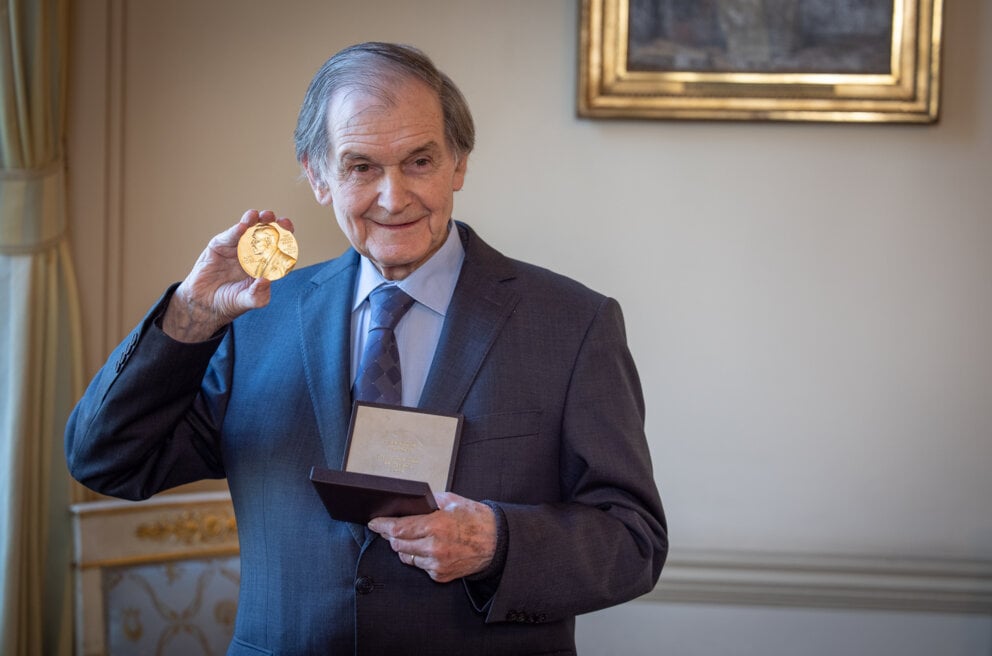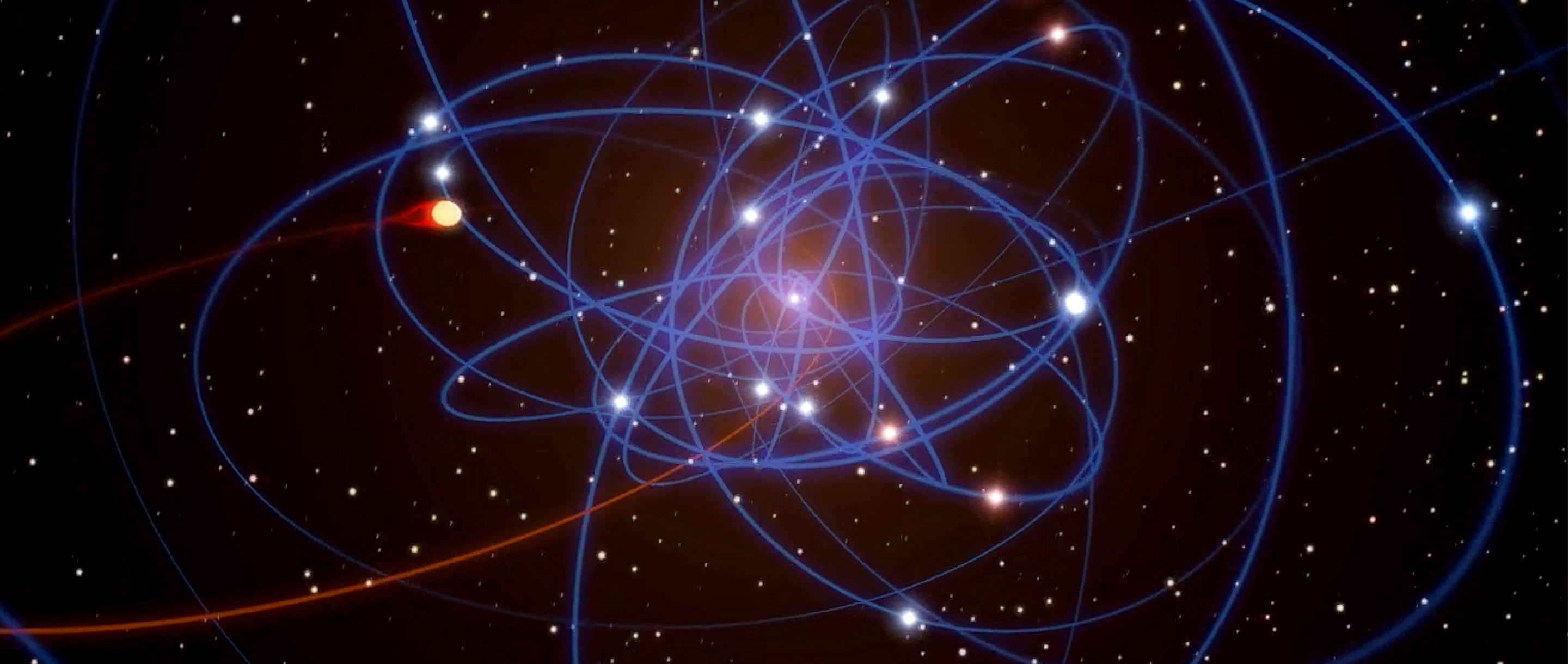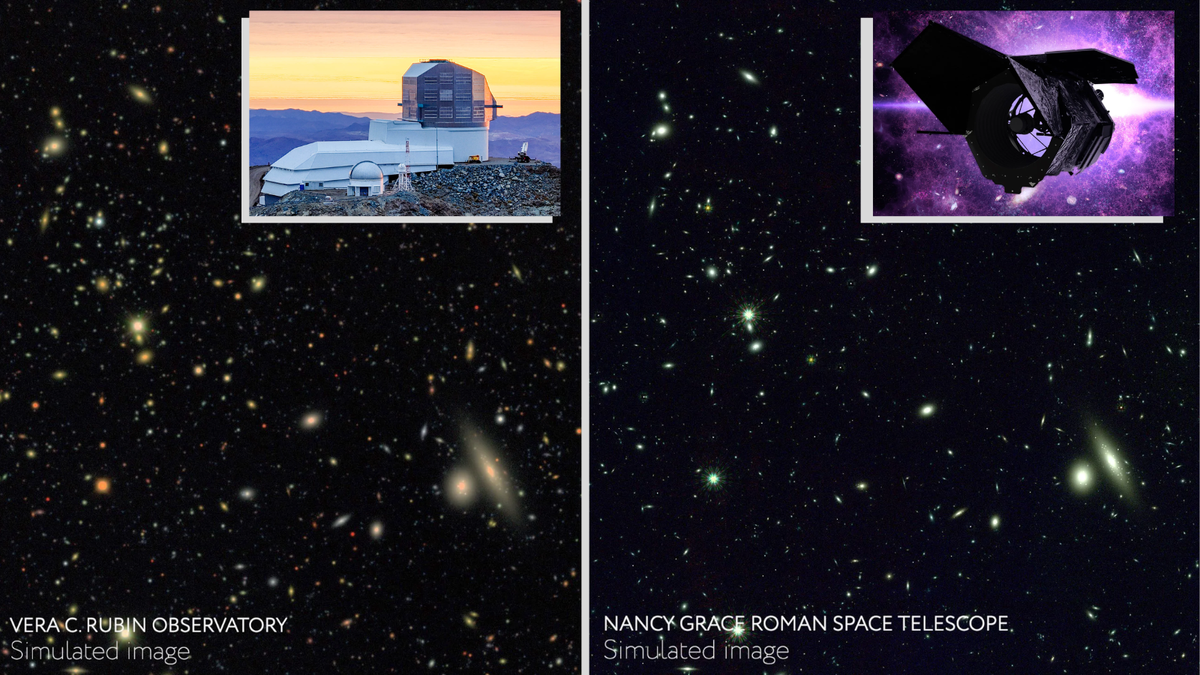The Brilliant Mind of Roger Penrose: A Journey Through His Life and Work
Introduction: A Visionary in Science and Mathematics
Roger Penrose, a name synonymous with groundbreaking contributions to physics, mathematics, and cosmology, is one of the most influential thinkers of our time. His work spans from the enigmatic realms of black holes to the intricate geometries of the universe. A Nobel laureate, Penrose has redefined our understanding of reality, blending abstract mathematical concepts with deep physical insights. This article delves into his remarkable journey, exploring his early life, major discoveries, and enduring impact on science.
Early Life and Academic Beginnings
Born on August 8, 1931, in Colchester, England, Roger Penrose was immersed in an intellectually stimulating environment from a young age. His father, Lionel Penrose, was a renowned psychiatrist and geneticist, while his mother, Margaret Leathes, was a medical doctor. This familial backdrop nurtured Penrose’s curiosity and analytical thinking.
Penrose’s fascination with mathematics emerged early, but his path was not entirely straightforward. Initially, he struggled with conventional schooling, preferring to explore ideas independently. He attended University College London, where he earned his bachelor’s degree in mathematics in 1952. His doctoral studies at Cambridge under the legendary cosmologist Dennis Sciama further honed his skills and set the stage for his future breakthroughs.
Contributions to General Relativity and Black Holes
One of Penrose’s most significant achievements is his work on black holes and the mathematical foundation of general relativity. In the 1960s, he introduced revolutionary concepts that transformed our comprehension of these cosmic phenomena.
Singularity Theorems
Penrose’s singularity theorems, developed in collaboration with Stephen Hawking, demonstrated that under certain conditions, singularities—points where spacetime curvature becomes infinite—must exist. This work provided a rigorous mathematical framework for understanding black holes and the Big Bang, cementing Penrose’s reputation as a leading theoretical physicist.
Penrose Diagrams
Another pivotal contribution was the development of Penrose diagrams, graphical tools that simplify the representation of spacetime in general relativity. These diagrams allow scientists to visualize complex scenarios, such as the infinite nature of black holes and the event horizon, making abstract concepts more accessible.
The Quest for Quantum Gravity
Penrose has long been intrigued by the union of quantum mechanics and general relativity, a challenge that remains one of the biggest puzzles in modern physics.
Twistor Theory
In the 1960s, Penrose proposed twistor theory, an innovative mathematical framework aimed at bridging quantum mechanics and general relativity. Although still not fully developed, twistor theory has influenced various areas of theoretical physics, including string theory and quantum field theory.
Penrose’s Criticism of Quantum Mechanics
Unlike many of his peers, Penrose has been a vocal critic of the conventional interpretations of quantum mechanics, particularly the Copenhagen interpretation. He argues that a unified theory of quantum gravity will require new physics beyond current models. His ideas on quantum consciousness and the role of gravity in wavefunction collapse remain highly debated but undeniably thought-provoking.
Penrose Tiles and Mathematical Artistry
Beyond physics, Penrose has made profound contributions to mathematics, particularly in geometry.
Aperiodic Tilings
Penrose tiles, discovered in the 1970s, are a set of non-repeating patterns that can tile a plane without translational symmetry. This discovery not only fascinated mathematicians but also had implications for materials science, inspiring the study of quasicrystals—a form of matter once thought impossible. Daniel Shechtman’s Nobel Prize-winning work on quasicrystals in 2011 validated Penrose’s mathematical foresight.
The Emperor’s New Mind and Consciousness Theories
Penrose’s interdisciplinary approach extends to the philosophy of mind. His 1989 book, *The Emperor’s New Mind*, challenges the notion that human consciousness can be fully explained by computational models.
The Orch-OR Theory
Together with anesthesiologist Stuart Hameroff, Penrose proposed the Orchestrated Objective Reduction (Orch-OR) theory, suggesting that quantum processes in microtubules within brain cells play a crucial role in consciousness. While controversial, this theory continues to spark debate and research in neuroscience and quantum biology.
Nobel Prize and Later Years
In 2020, Penrose was awarded the Nobel Prize in Physics, shared with Reinhard Genzel and Andrea Ghez, for his discovery that black hole formation is a robust prediction of general relativity. This recognition underscored his lifetime of contributions to science.
Even in his 90s, Penrose remains intellectually active, publishing new research and engaging with the scientific community. His legacy is not just in his discoveries but also in the questions he has posed, inspiring future generations to explore the universe’s deepest mysteries.
(To be continued...)
The Intersection of Art and Science in Penrose’s Work
Roger Penrose’s brilliance is not confined to the rigid structures of mathematics and physics—his creativity spills over into the world of art, illustrating the profound connection between aesthetic beauty and scientific truth. His collaborations with iconic artist M.C. Escher and his own artistic endeavors highlight how deeply intertwined these disciplines are in his worldview.
Penrose and M.C. Escher: A Meeting of Minds
One of the most fascinating intersections in Penrose’s career was his relationship with Dutch artist M.C. Escher, known for his mathematically inspired works featuring impossible geometries. Penrose’s 1958 discovery of the Penrose triangle—a never-ending loop appearing three-dimensional yet impossible to construct—directly influenced Escher’s famous lithograph *Waterfall*. This collaboration between scientist and artist demonstrated how abstract mathematical concepts could manifest in visually stunning art, captivating both logical and creative minds.
The Role of Aesthetics in Mathematical Discovery
For Penrose, mathematical beauty is not just a byproduct of discovery—it is often the guiding principle. He famously stated that elegance and simplicity in equations frequently hint at truth, a sentiment shared by luminaries like Einstein and Dirac. His pursuit of symmetry, geometric harmony, and visual reasoning underscores the importance of intuition in scientific breakthroughs, proving that deep understanding often begins with artistic curiosity.
Unconventional Ideas and the Boundaries of Science
Penrose has never shied away from controversial or unconventional ideas, often challenging mainstream scientific paradigms. His willingness to explore the fringes of knowledge has led to both skepticism and admiration.
The Cyclic Cosmology Hypothesis
While the Big Bang theory is widely accepted, Penrose has proposed an alternative model: Conformal Cyclic Cosmology (CCC). This theory suggests that the universe undergoes infinite cycles of expansion and renewal, with black holes playing a crucial role in transmitting information from one eon to the next. Though debated, CCC presents a bold reimagining of cosmic history, pushing physicists to reconsider fundamental assumptions about time and entropy.
Against the Tide: Quantum Mechanics and Determinism
Penrose’s skepticism of quantum mechanics extends beyond interpretation—he questions whether the theory is fundamentally incomplete. His arguments often revolve around the role of gravity in wavefunction collapse, a concept absent from standard quantum theory. While critics argue that his views lack experimental support, Penrose’s insistence on probing the gaps in modern physics underscores his relentless pursuit of deeper truths.
Educational Influence and Mentorship
Throughout his career, Penrose has inspired generations of scientists, not only through his research but also by nurturing young minds. His academic journey took him to institutions like Oxford, Princeton, and the University of London, where he mentored students who would go on to make their own significant contributions.
The Penrose-Hawking Collaboration
Perhaps the most famous of his intellectual partnerships was with Stephen Hawking. Together, they tackled the singularity theorems, demonstrating how general relativity predicts the existence of black holes. This collaboration was the beginning of a lifelong friendship, with Hawking often crediting Penrose for introducing him to the deep geometric methods that defined his later work.
Public Engagement and Science Communication
Unlike many theorists who remain confined to academic circles, Penrose has consistently engaged with the public. His books, lectures, and interviews distill complex scientific ideas into accessible explanations, making profound concepts like spacetime curvature and quantum theory tangible for non-experts. His 2004 book *The Road to Reality: A Complete Guide to the Laws of the Universe* serves as a monumental resource, bridging the gap between textbook rigor and popular science.
Philosophical Underpinnings of His Work
Penrose’s scientific inquiries are deeply rooted in philosophical questions about reality, consciousness, and the nature of existence itself. His work challenges reductionist views, advocating for a universe where mathematical truth and human perception intersect.
Platonism in Mathematics
Penrose is a staunch Platonist, believing that mathematical truths exist independently of human thought. To him, mathematicians don’t invent—they discover eternal truths embedded in the fabric of reality. This philosophical stance underpins much of his work, from his study of black holes to his search for quantum gravity.
The Mystery of Human Consciousness
His forays into neuroscience and artificial intelligence reveal a broader quest to understand the mind. Penrose argues that consciousness cannot be replicated by algorithms alone—it requires a deeper, possibly quantum-mechanical explanation. These ideas, though contentious, have spurred interdisciplinary dialogue between physicists, computer scientists, and philosophers.
Legacy and Future Directions
As Penrose continues to work well into his 90s, his influence remains as potent as ever. His unfinished theories—particularly in quantum gravity and consciousness—offer fertile ground for future scientific revolutions.
The Continuing Study of Twistor Theory
Twistor theory, while not yet a complete framework for quantum gravity, has seen renewed interest in recent years. Researchers explore its potential connections to modern physics, including holography and string theory, keeping Penrose’s vision alive in cutting-edge studies.
Inspiration for New Generations
Young scientists increasingly cite Penrose as a model of intellectual fearlessness—his willingness to challenge orthodoxy encourages others to think beyond conventional boundaries. Conferences, academic prizes, and even artistic works continue to celebrate his legacy, ensuring that his ideas remain vibrant in the scientific ecosystem.
(To be continued...)
Penrose's Impact on Modern Physics and Beyond
Roger Penrose's contributions have fundamentally reshaped multiple scientific disciplines, leaving an indelible mark on how we understand the universe. His influence extends far beyond his own direct research, permeating contemporary physics and inspiring new fields of study.
The Enduring Legacy of Penrose Processes
One of Penrose's most tantalizing contributions to astrophysics is the Penrose process - a mechanism for extracting energy from rotating black holes. Proposed in 1969, this theoretical framework demonstrated how energy could be harnessed from a black hole's ergosphere, the region just outside its event horizon. This radical idea didn't just remain theoretical; it sparked decades of research into black hole dynamics and energy extraction mechanisms that continue to influence astrophysics today.
Recent simulations suggest that some high-energy astrophysical phenomena, including relativistic jets from active galactic nuclei, might operate on principles related to Penrose's original concept. The process has also found surprising connections to quantum field theory in curved spacetime, showing how prescient Penrose's ideas were.
The Unfinished Revolution: Challenges to Current Physics
Even in his tenth decade, Penrose remains one of physics' most provocative thinkers, challenging established theories and proposing radical alternatives. His persistent questioning of quantum mechanics and conventional cosmology keeps the scientific community on its toes, forcing researchers to re-examine long-held assumptions.
Questioning the Inflationary Universe
Penrose has been an outspoken critic of cosmological inflation theory, arguing that it fails to resolve fundamental issues about the universe's initial conditions. His conformal cyclic cosmology offers a bold alternative, suggesting that the observed universe is just one in an endless cycle of aeons. While this hypothesis remains controversial, it has forced cosmologists to confront difficult questions about the standard cosmological model that might otherwise go unasked.
The Measurement Problem Revisited
Penrose's Orch-OR theory presents perhaps his most radical challenge to conventional physics. By proposing that gravity plays a role in quantum state reduction, he directly confronts the measurement problem that has puzzled physicists since the dawn of quantum mechanics. While most physicists remain skeptical of this approach, Penrose's persistence in pushing this unconventional idea has kept attention on some of quantum theory's deepest mysteries.
Honors and Recognition: A Life of Achievement
Penrose's long and illustrious career has been marked by virtually every honor the scientific community can bestow, culminating in his 2020 Nobel Prize in Physics. Yet his influence extends far beyond these formal recognitions.
From the Copley Medal to the Nobel Prize
Penrose's trophy case includes some of science's most prestigious awards:
- The Wolf Prize in Physics (1988)
- The Dirac Medal (1989)
- The Royal Society's Copley Medal (2008)
- The Nobel Prize in Physics (2020)
What makes these honors remarkable is how they span different aspects of his work - from pure mathematics to theoretical physics to cosmology. This breadth of recognition testifies to the extraordinary range of his contributions.
The Human Side of a Scientific Genius
Behind the equations and theories stands a remarkably multifaceted individual whose interests and talents extend far beyond the laboratory.
Penrose as Educator and Collaborator
Those who have worked with Penrose describe an endlessly curious mind with a unique ability to connect diverse ideas. His former students recount his distinctive teaching style - often working problems out on the spot, making mistakes, correcting them, and thereby demonstrating the actual process of mathematical discovery rather than presenting polished results.
Family, Hobbies, and Personal Philosophy
The Penrose family represents a remarkable intellectual dynasty. His brother Jonathan is a chess Grandmaster, his father a famous geneticist, and his son is an accomplished mathematician. In his limited free time, Penrose enjoys chess, art, and music. He has spoken about how these pursuits inform his scientific thinking, offering different perspectives on patterns, structures, and creativity.
Future Directions: Where Penrose's Ideas May Lead
Even as we celebrate Penrose's past achievements, his most revolutionary ideas may still be ahead of us. Several areas of active research bear the unmistakable imprint of his thinking.
Twistor Theory's Second Act
Recent developments in quantum gravity and string theory have brought new life to Penrose's twistor theory. Some physicists now see it as potentially providing the mathematical language for a unified theory, particularly in its connections to holographic principles and amplituhedron theory in particle physics.
Experimental Tests of Orch-OR
Advances in quantum biology and neuroscience may soon provide ways to test aspects of Penrose's controversial consciousness theory. Experiments probing quantum effects in microtubules and studies of anesthetic action on brain function could offer clues about the physical basis of consciousness that either support or refute his hypotheses.
Conclusion: A Legacy of Unanswered Questions
Roger Penrose's greatest legacy may not be the answers he's provided, but the profound questions he's forced us to confront. From the nature of black holes to the origin of consciousness, his work continues to challenge and inspire.
At 93 years old as of 2024, Penrose remains intellectually active, still publishing papers and engaging with cutting-edge research. In an era of increasing scientific specialization, he stands as a reminder of the power of interdisciplinary thinking and the importance of asking fundamental questions about our universe.
His career embodies the essence of scientific exploration - not settling for conventional wisdom, but relentlessly probing the boundaries of what we know. Whether his boldest theories about consciousness, cosmology, or quantum physics ultimately prove correct, the scientific journey they've inspired ensures that Penrose's influence will endure for generations to come.





















Comments